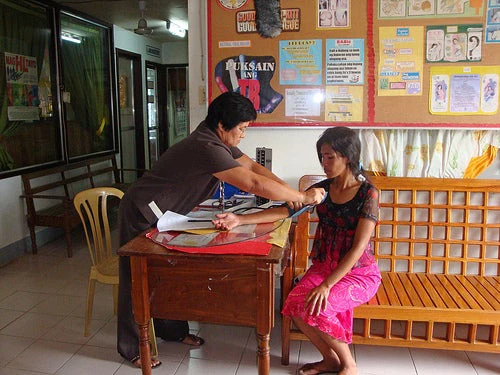New approaches to medical care can improve health outcomes (Credit: World Bank, Flickr)
In many poor countries, a large proportion of health services is provided by the private sector, including services to the poor. However, the private sector is highly fragmented and the quality of services varies widely. Private health markets consist of providers with very diverse levels of qualification, ranging from formally trained doctors with medical degrees to informal practitioners without any formal medical training. According to Jishnu Das, in rural Madhya Pradesh— one of the poorest states in India, households can access on average 7.5 private providers, 0.6 public providers and 3.04 public paramedical staff. Of those identified as doctors, 65% had no formal medical training and of every 100 visits to healthcare providers, eight were to the public sector and 70 to untrained private sector providers.
Often this reality has led health regulators to focus on “weeding out the quacks” and ensuring that only qualified providers are able to practice. However, as Jishnu’s research has shown, low effort among qualified providers can often reduce quality of care to the levels of untrained providers. Therefore, strict enforcement of regulation stipulating that only qualified providers may practice could lead to acceptance of low quality care, while pushing out good quality care. In this sense, a better approach might be to engage all providers and connect informal practitioners to qualified health professionals.
Last week we hosted an event with World Health Partners (WHP), an international NGO which identifies existing resources available outside the public sector. WHP helps supplement healthcare delivery to marginalized and rural communities, which constitute up to three-fourths of the population in developing countries, by creating an operational framework where providers can deliver care themselves or, when not properly equipped to do so, can serve as a conduit to higher-skilled providers and earn a commission in the process. Such a strategy is important since it makes it possible to creatively use informal providers who serve as the first point of contact for rural communities. The framework enables these providers to connect electronically with general practitioners and specialists concentrated in urban areas, thereby combining local social networks with remote technical skills and extending the frontiers of service delivery.
Technologies and business networking are important ingredients to this framework. Opportunities to deliver curative care—the primary interest of the private sector – come bundled with the mandate to deliver preventative services. Scale is not only needed to address the extensive need but also to generate volume, which reduces costs and makes services more affordable for the rural poor. WHP’s largest project is currently being implemented in Bihar, India’s poorest state with a population of 104 million, where curative and preventive care is delivered through a network of 6,000 rural centers. The network will grow to 18,000 centers over the next 18 months with support from the Gates Foundation.
This approach is bound to be controversial and while it’s not without risks, it seems worthy of exploring given its potential impact. In particular, the type of approach pioneered by WHP could be replicated if an independent evaluation sheds light on the demand for these services; how often unqualified providers rely on the network’s technology as opposed to business as usual; the cost compared to more traditional approaches such as sending qualified providers to rural villages; and, most importantly, the impact on health outcomes.
As we advance towards a “science of delivery,” it will be critical to have a better understanding how markets for healthcare function and how they can work better for the poor. Understanding how to leverage existing providers, even when they lack formal qualifications, will inevitably be a key part of the puzzle.



Join the Conversation